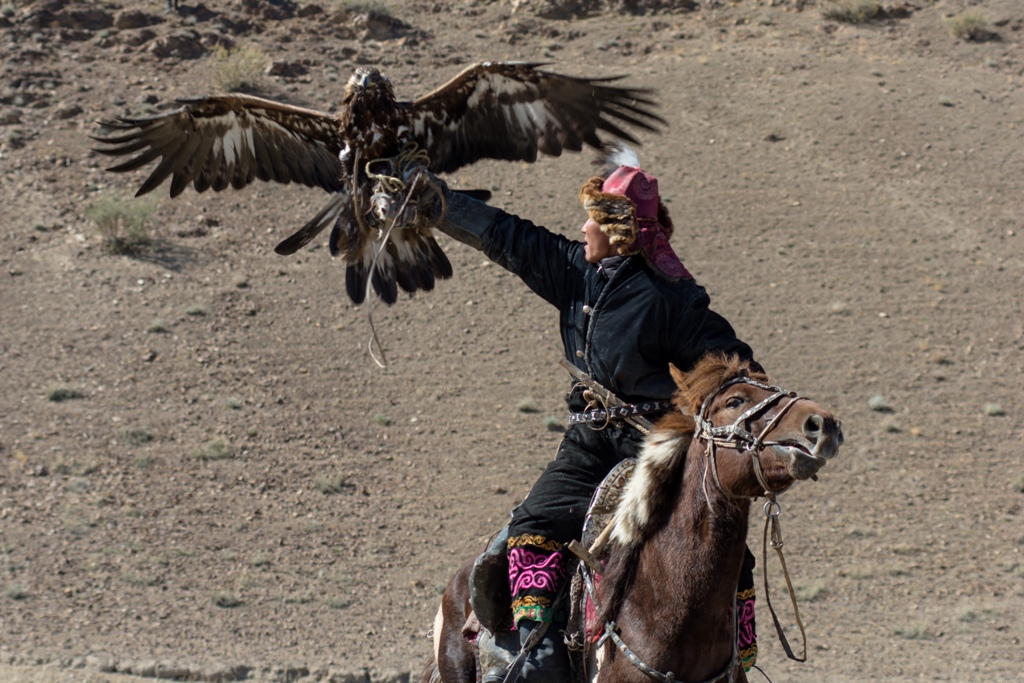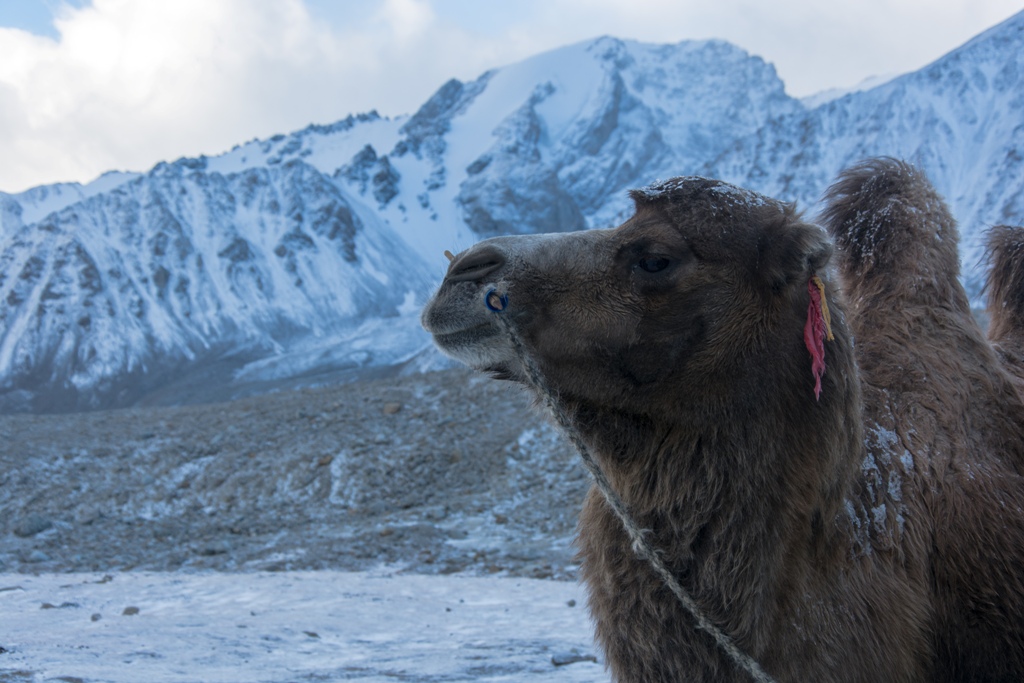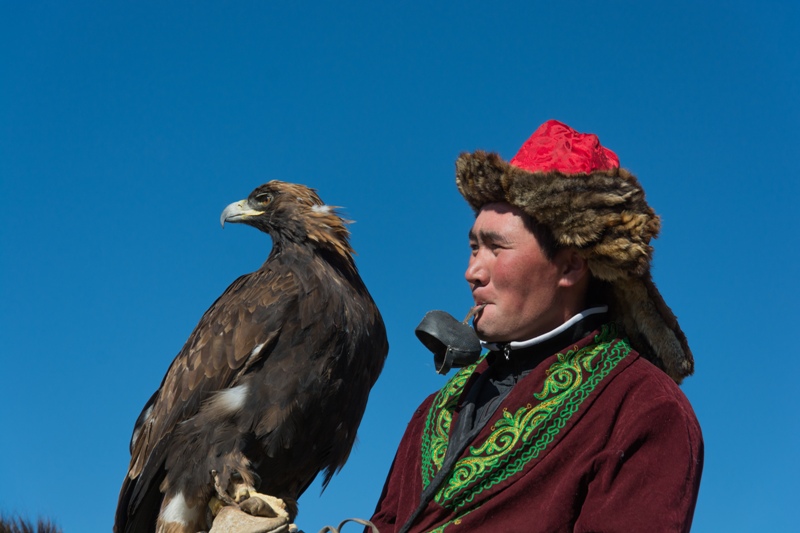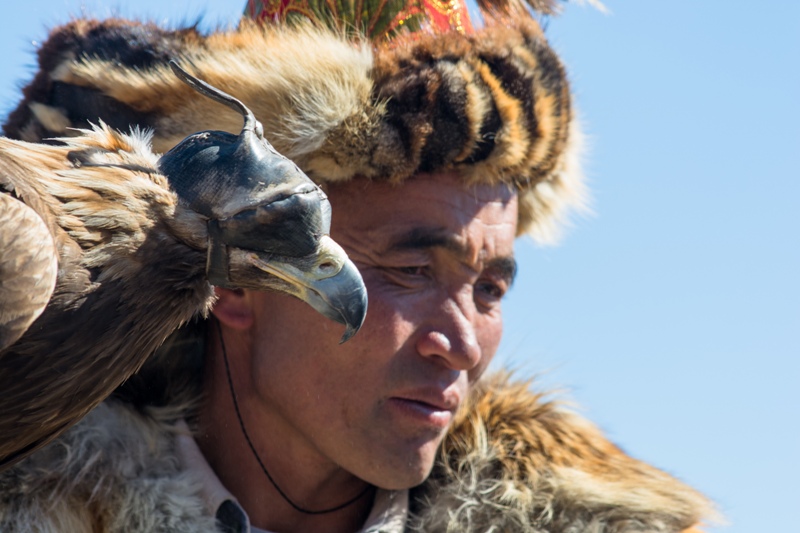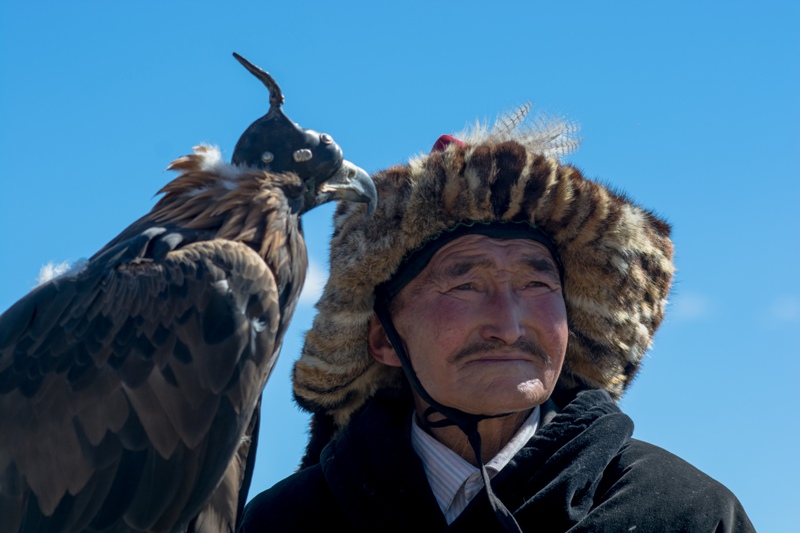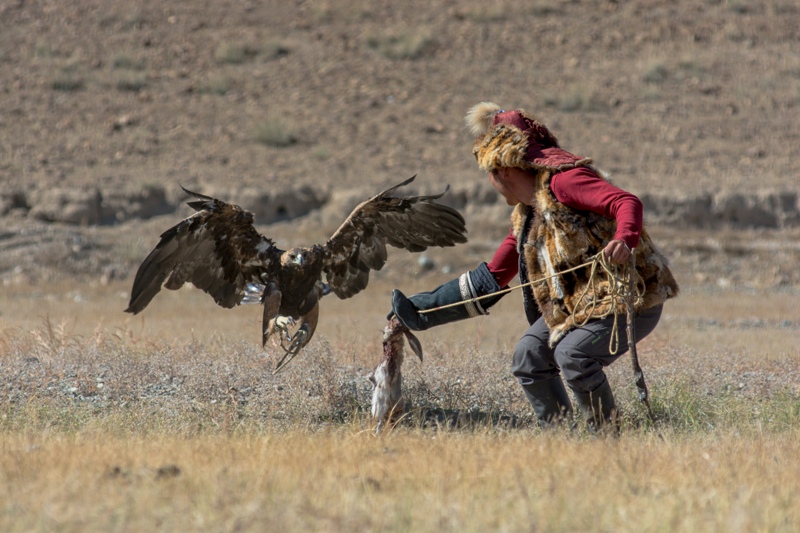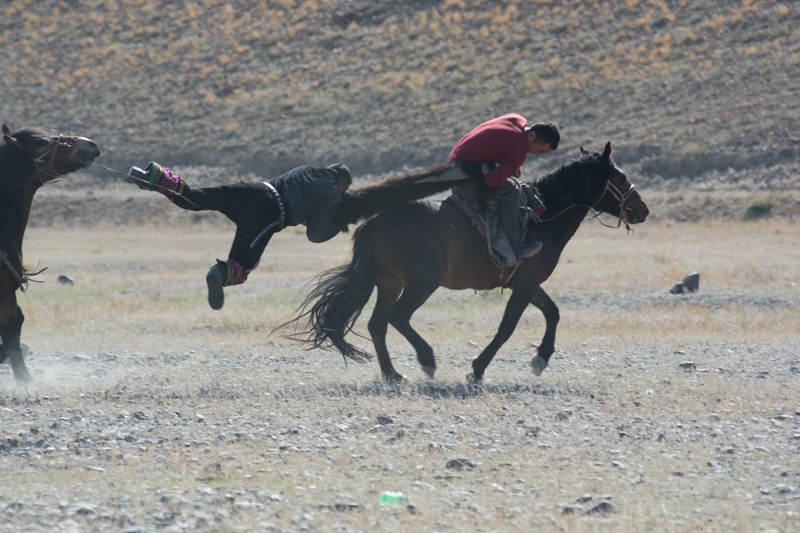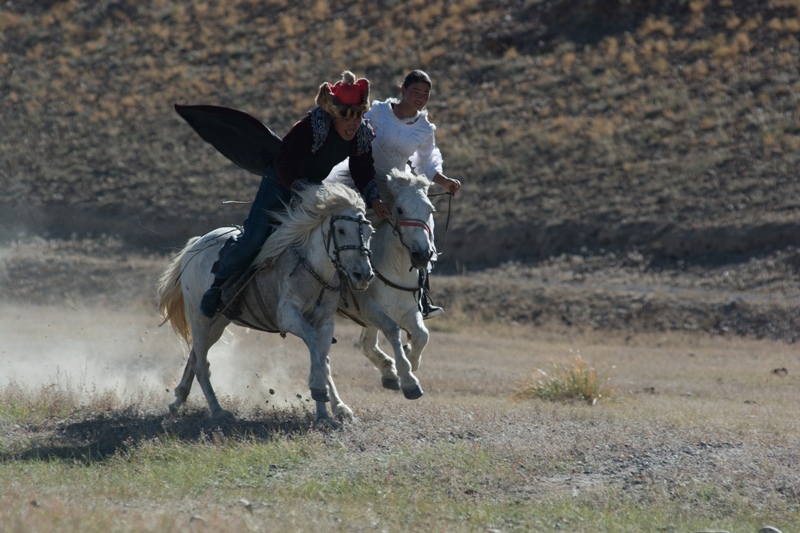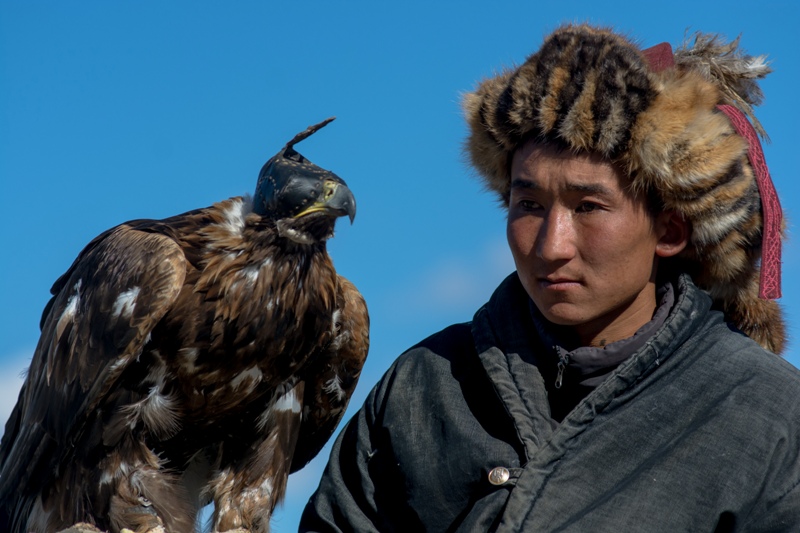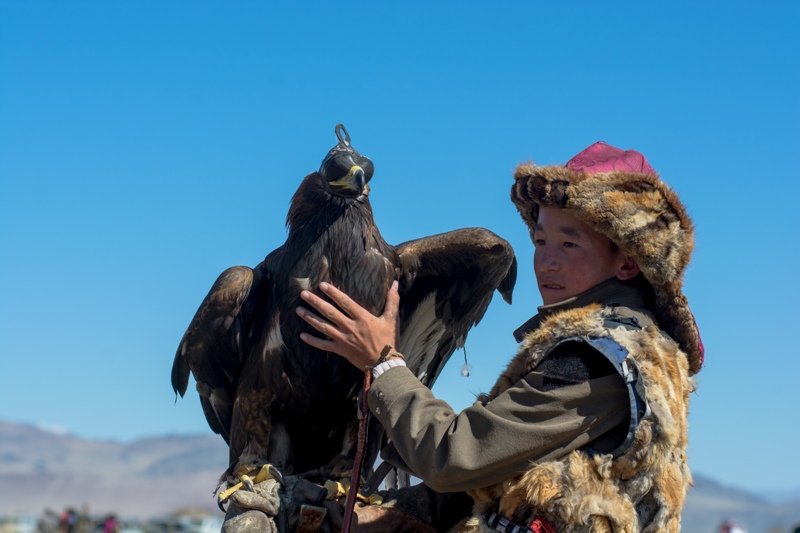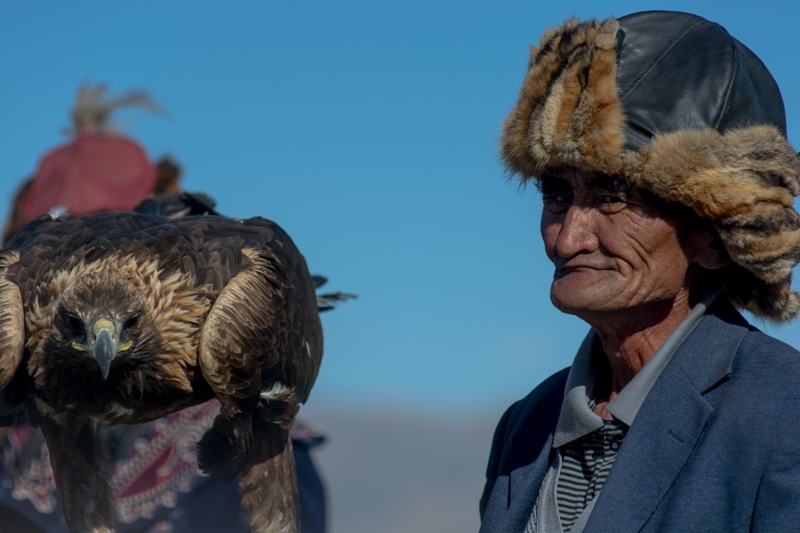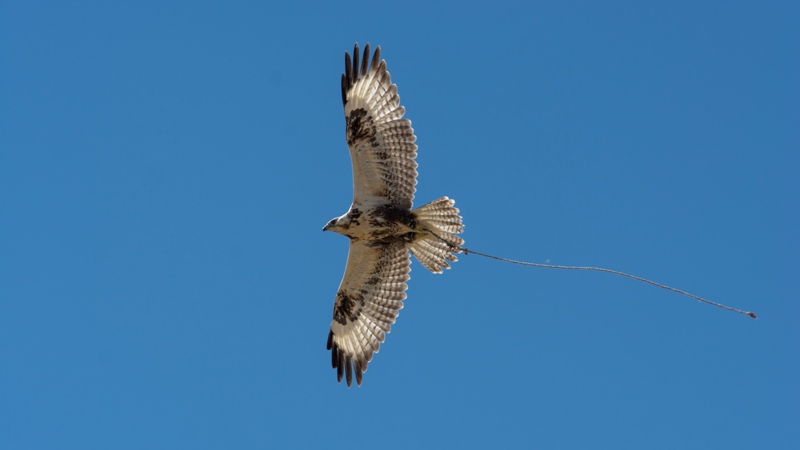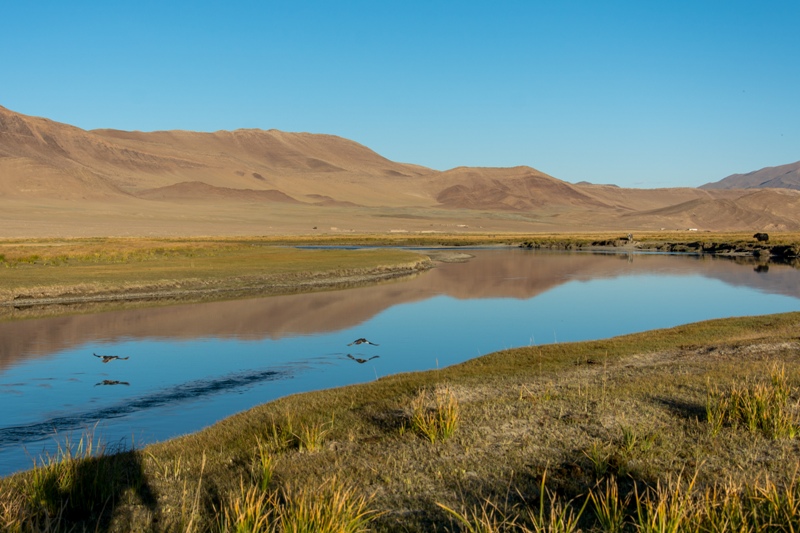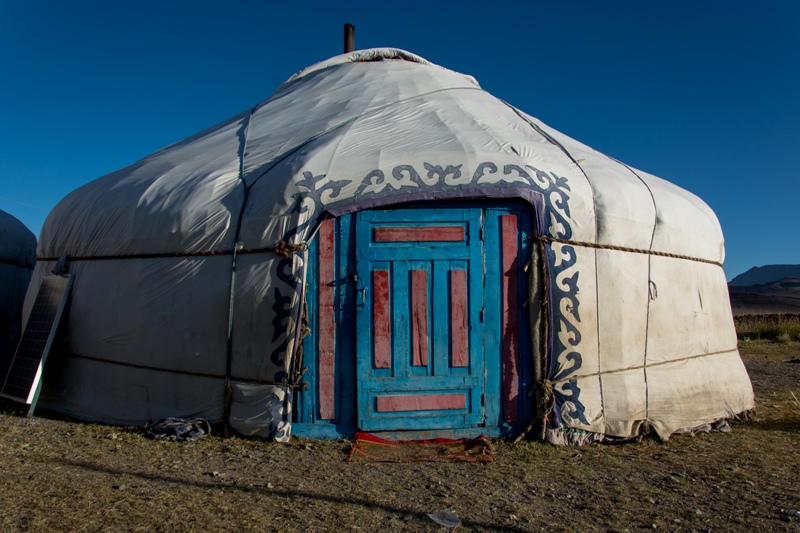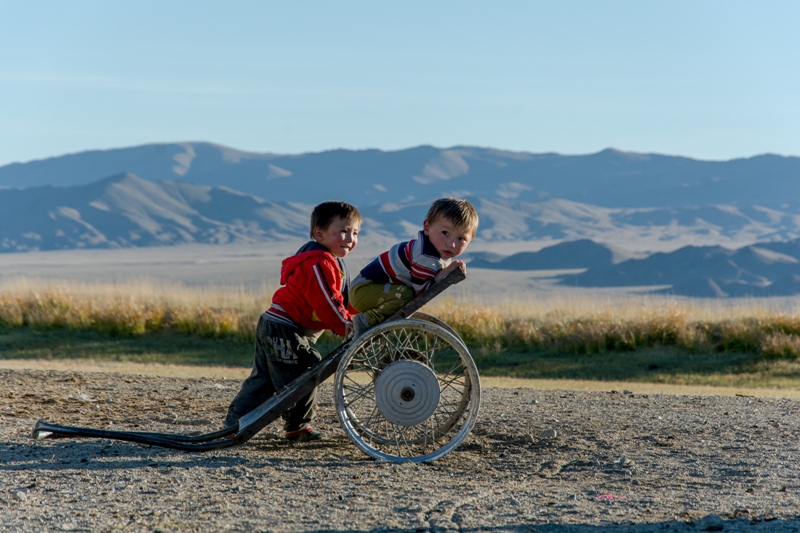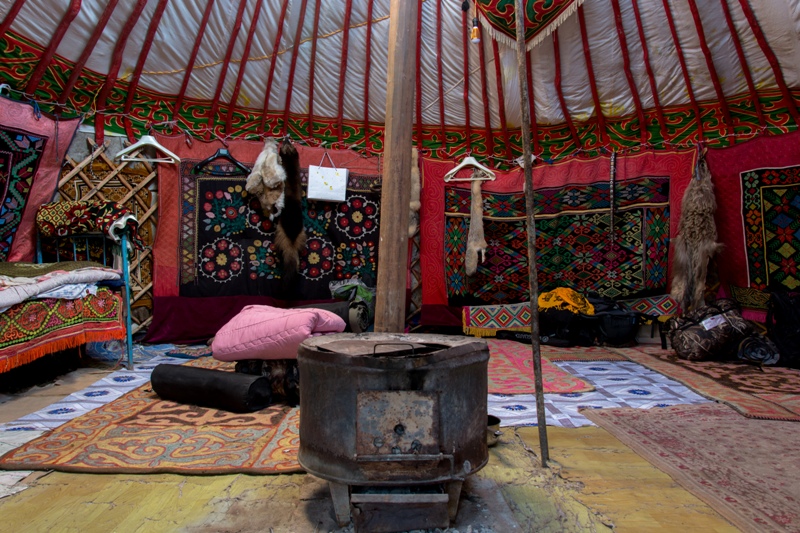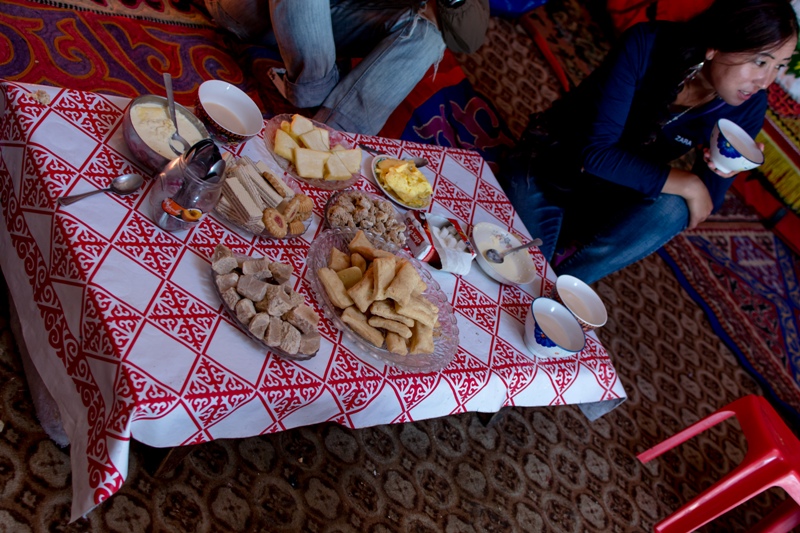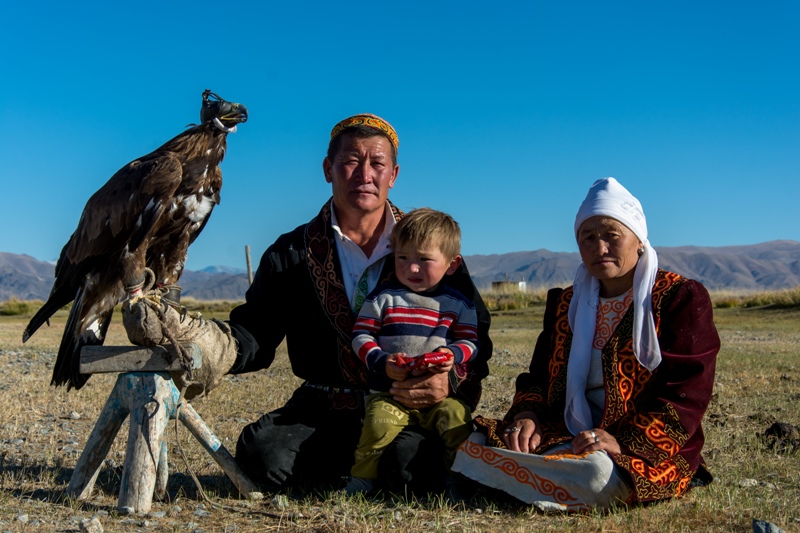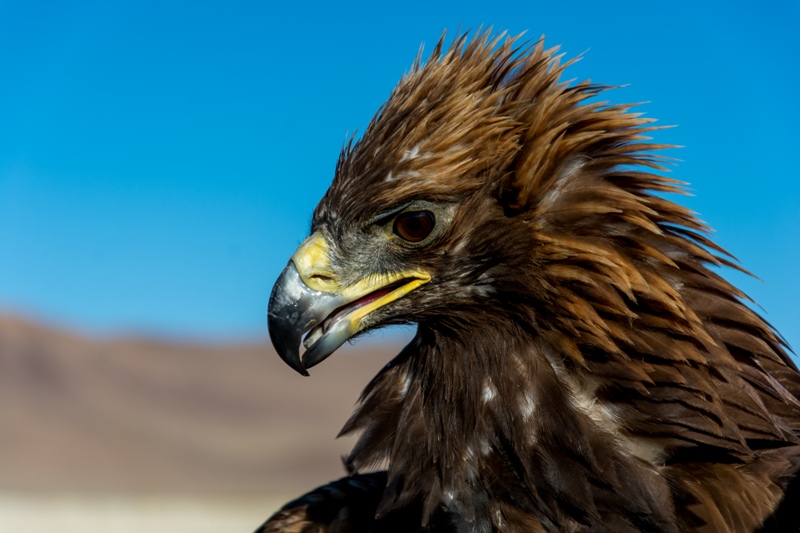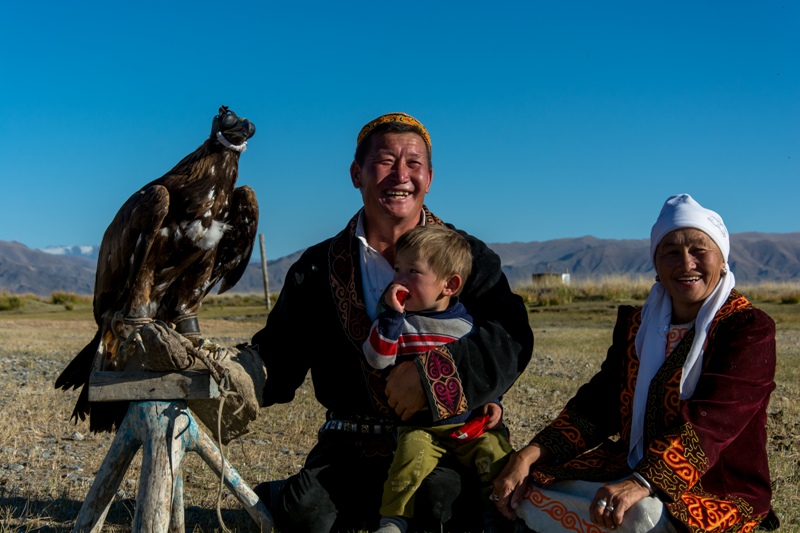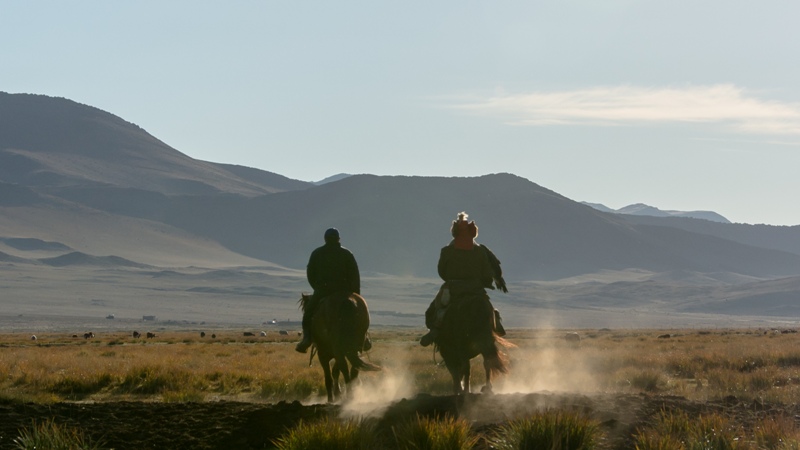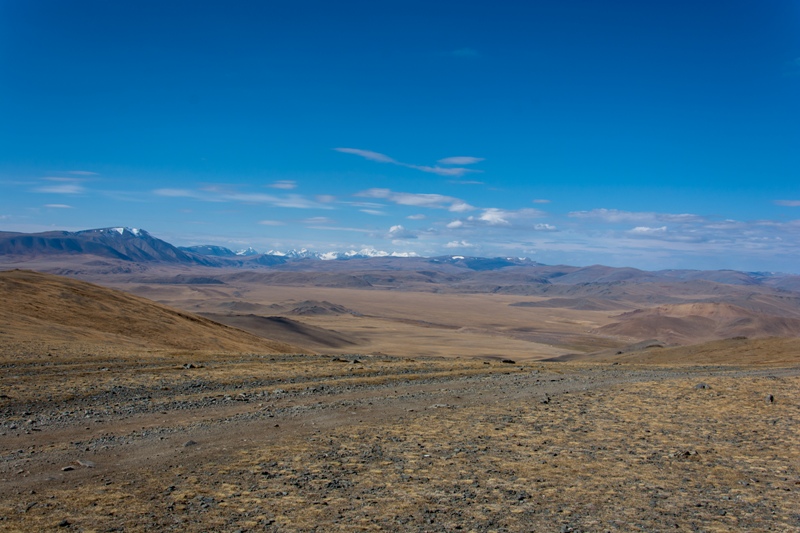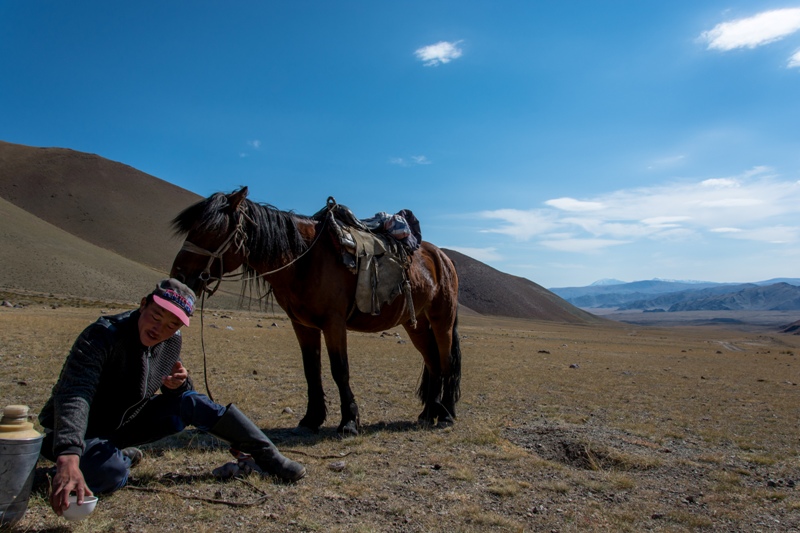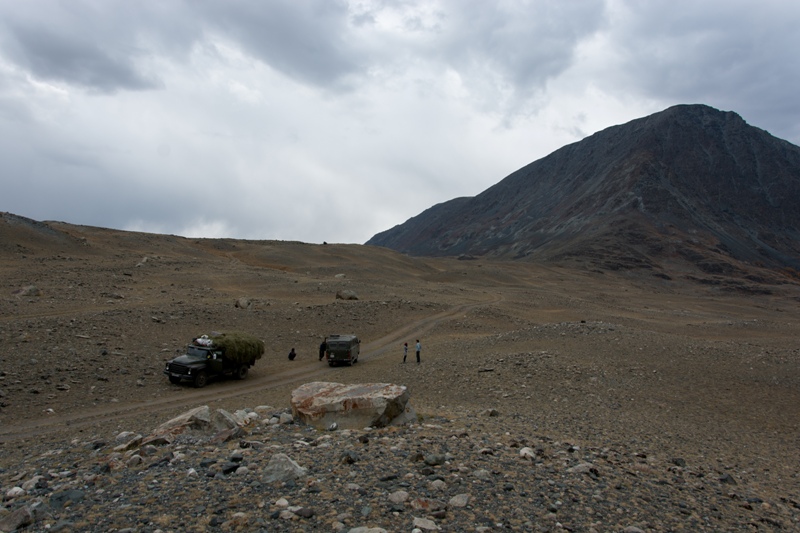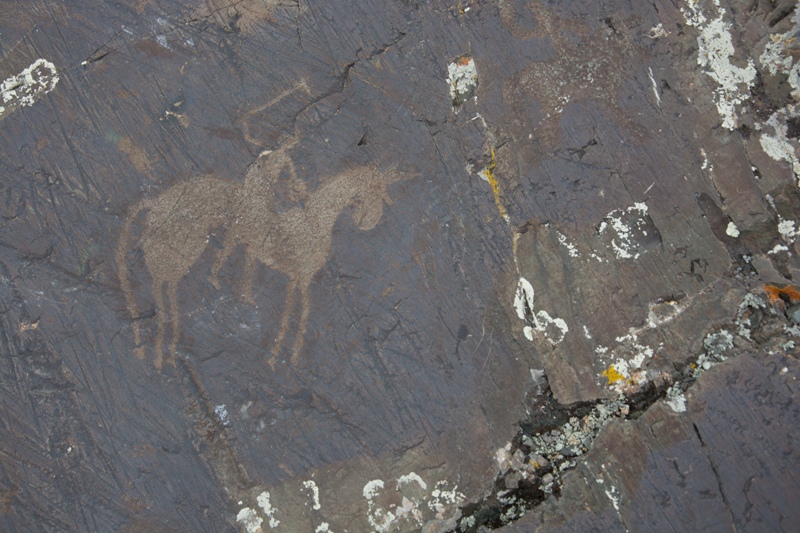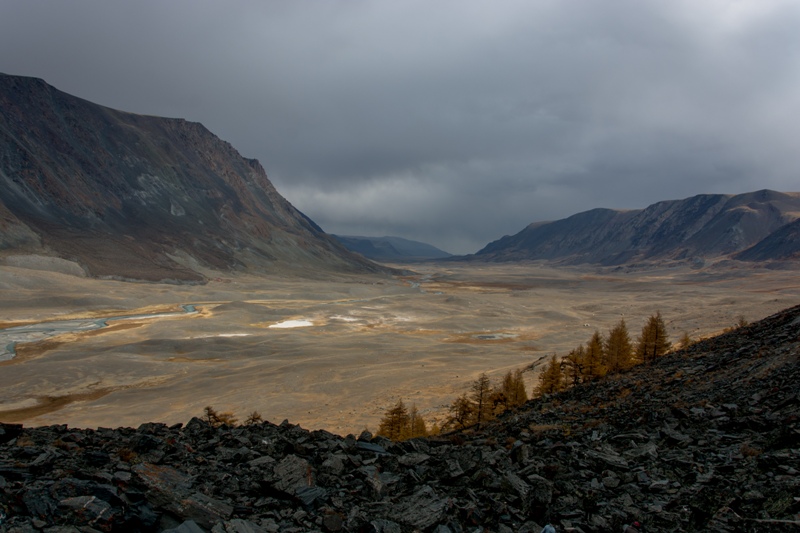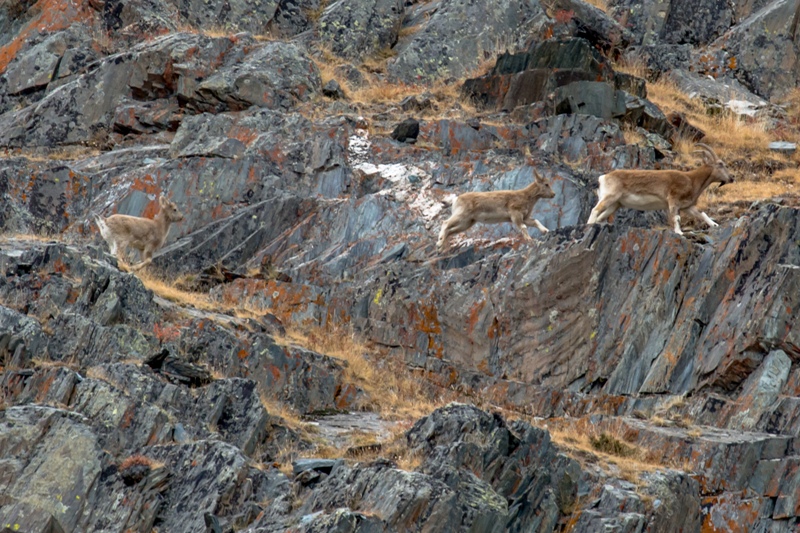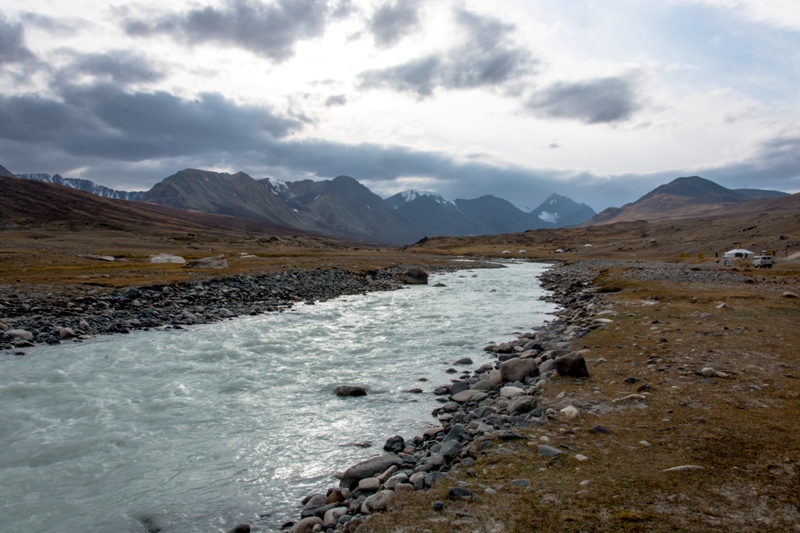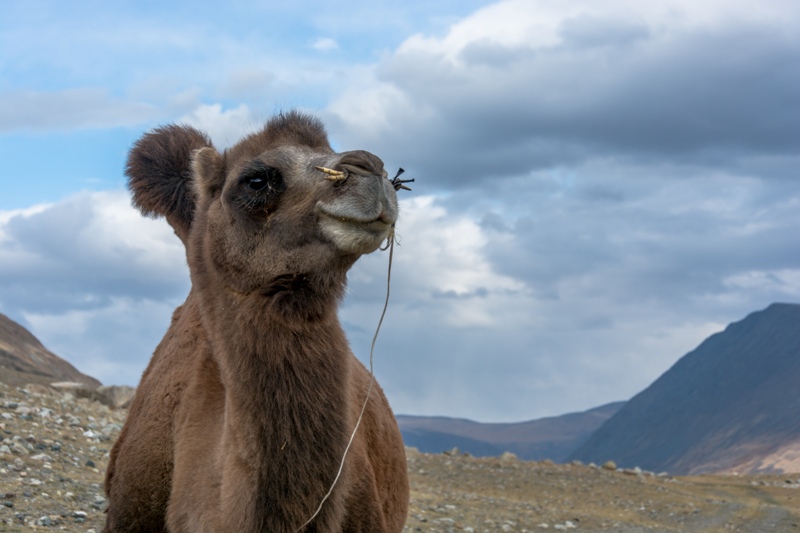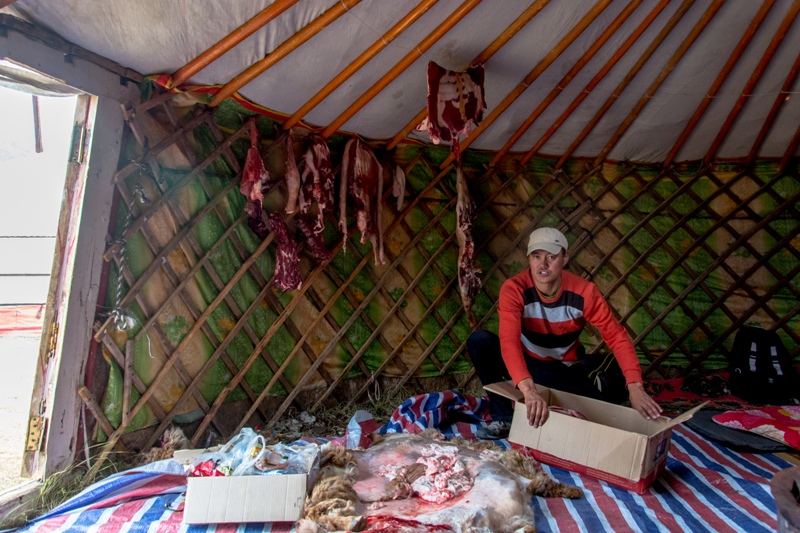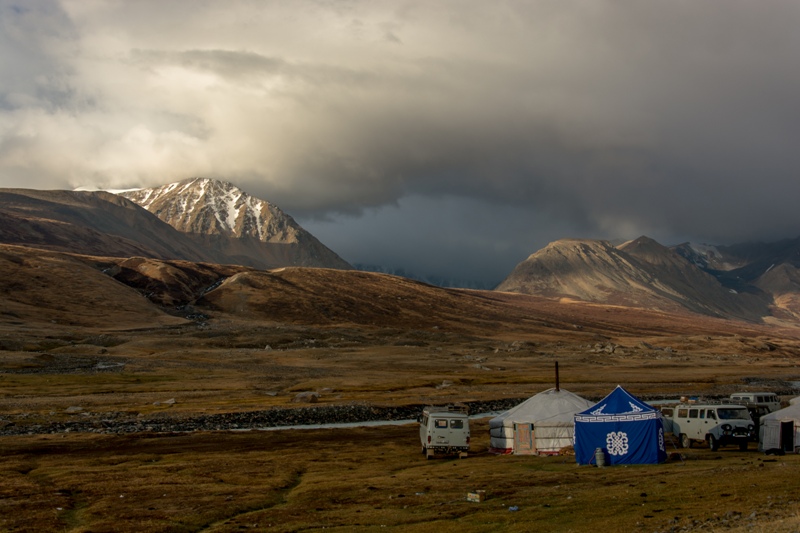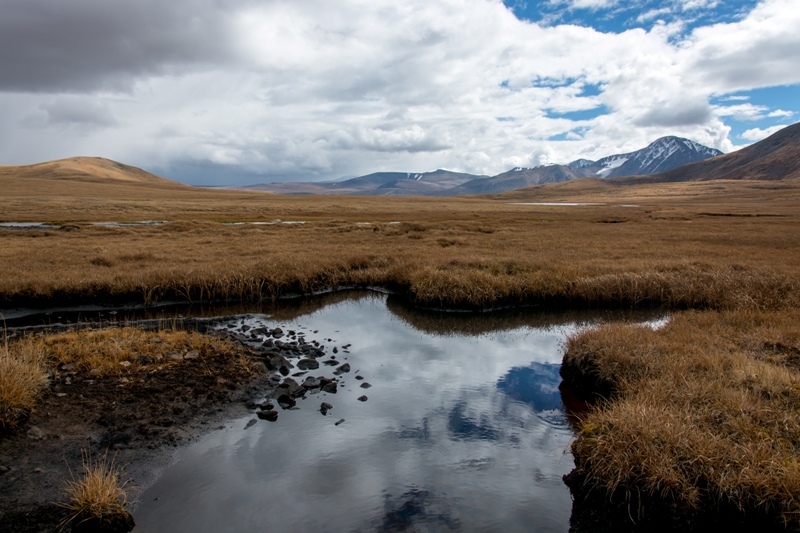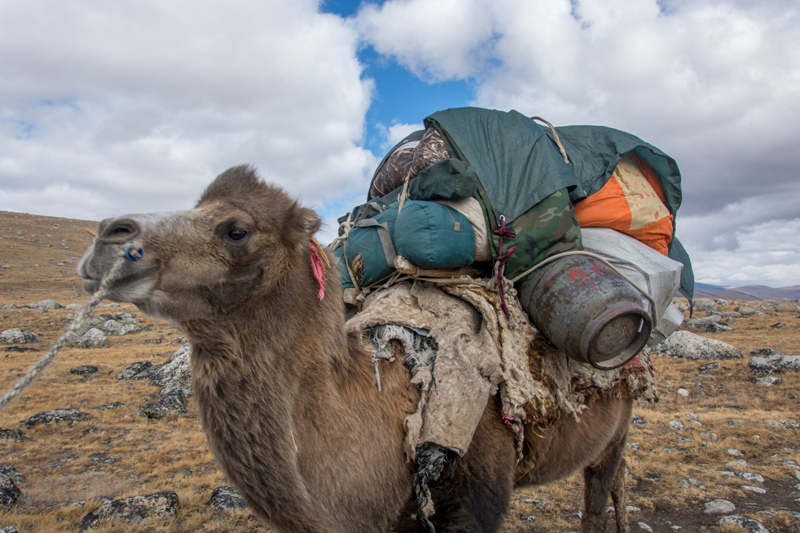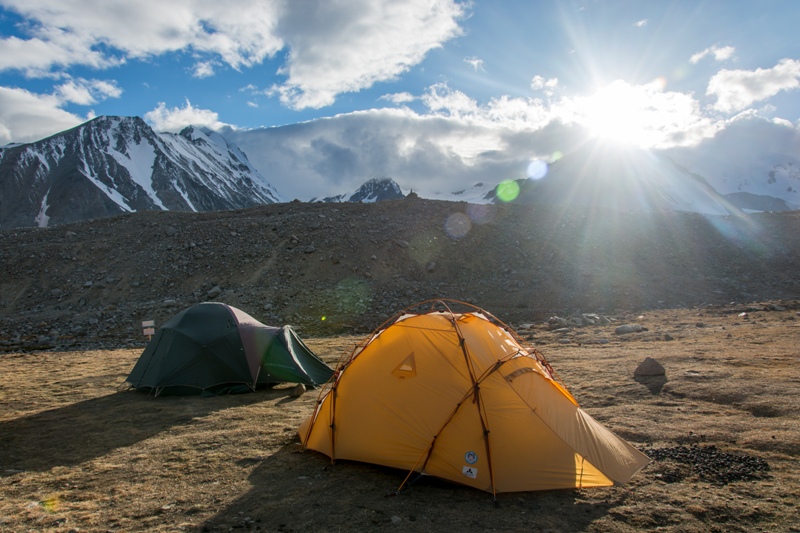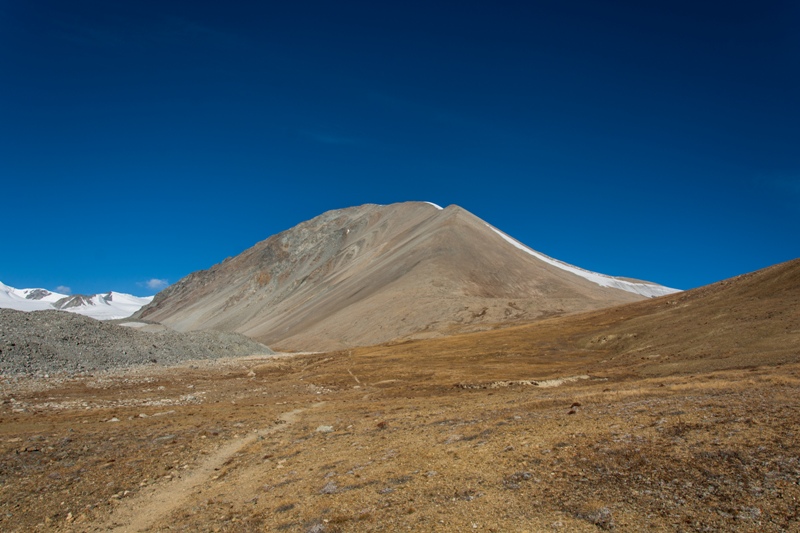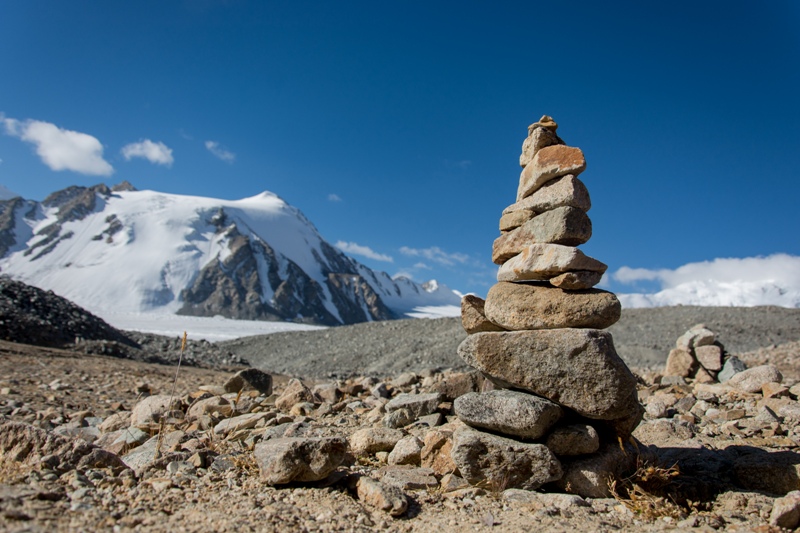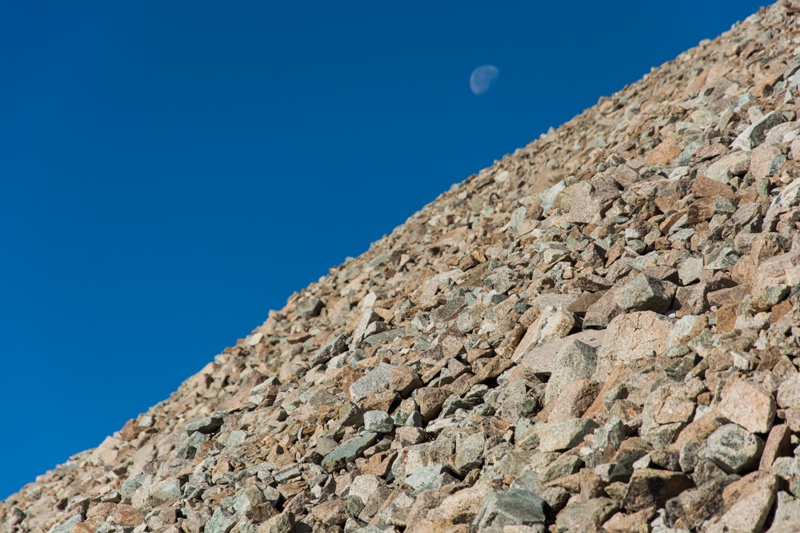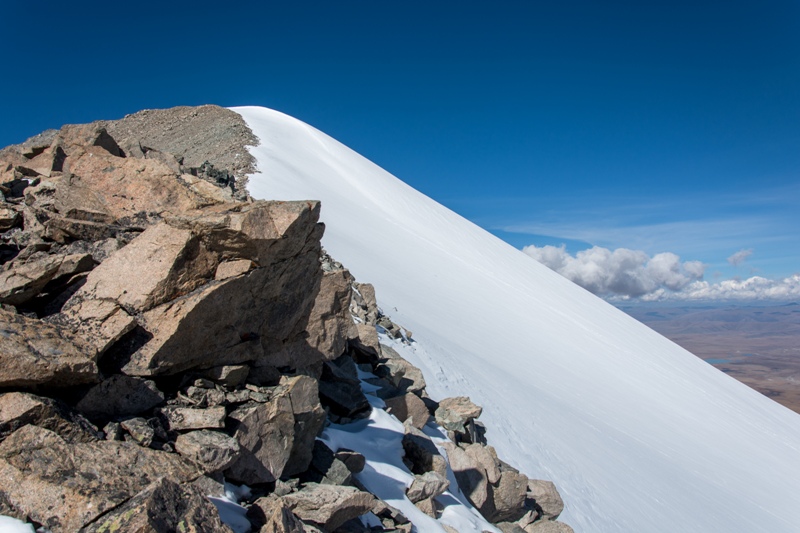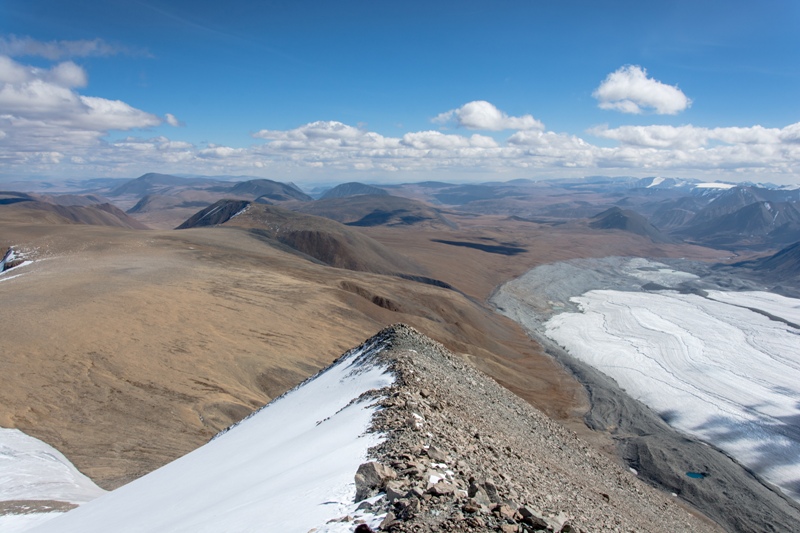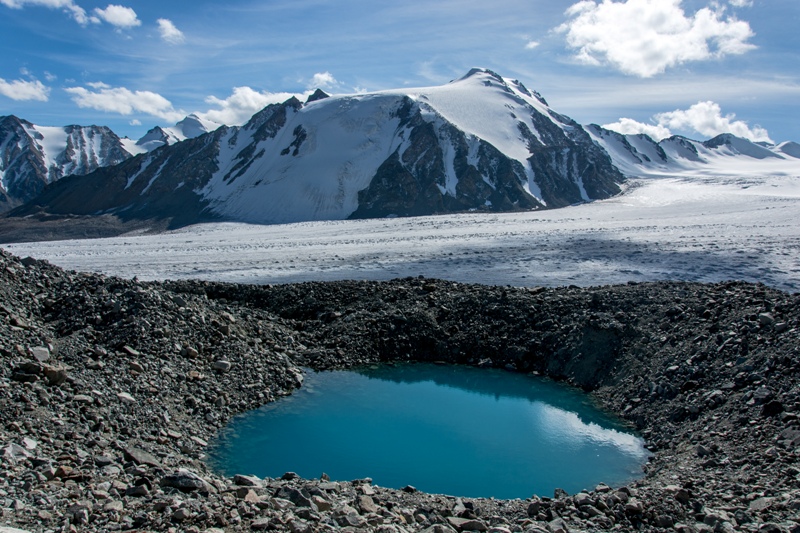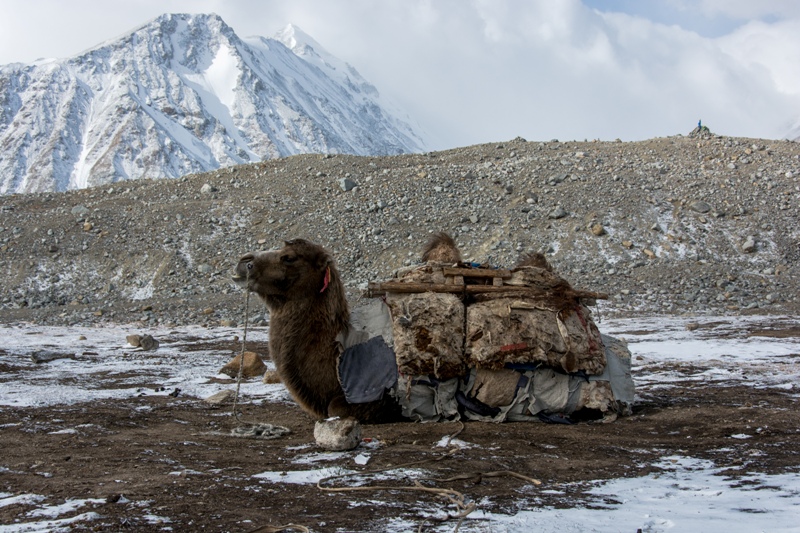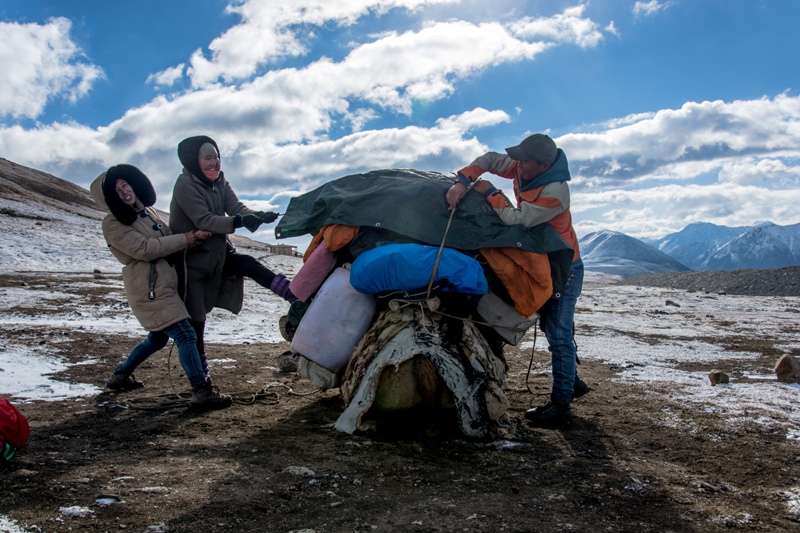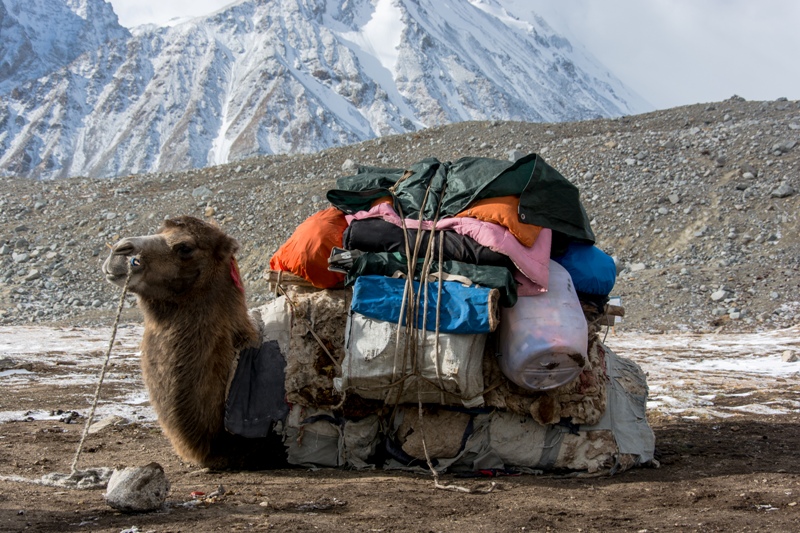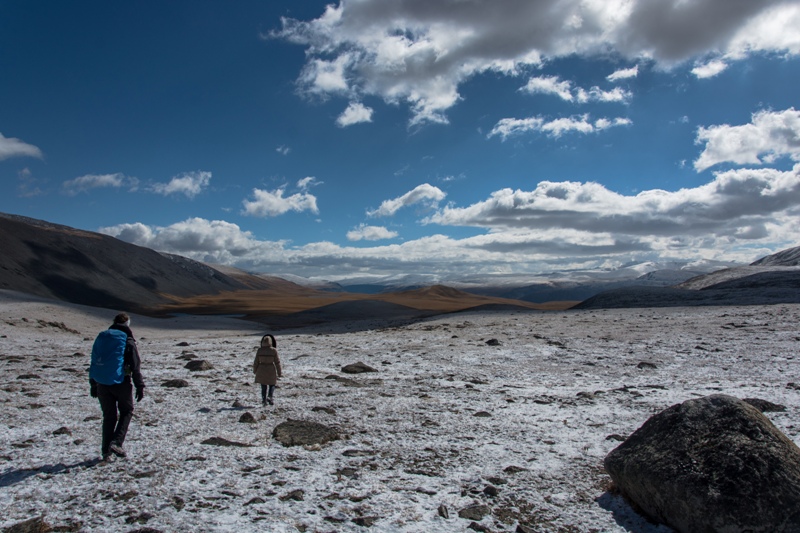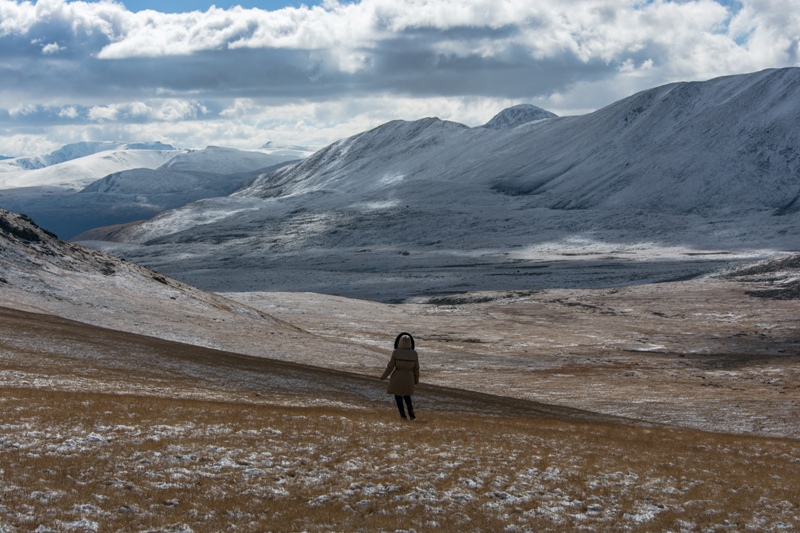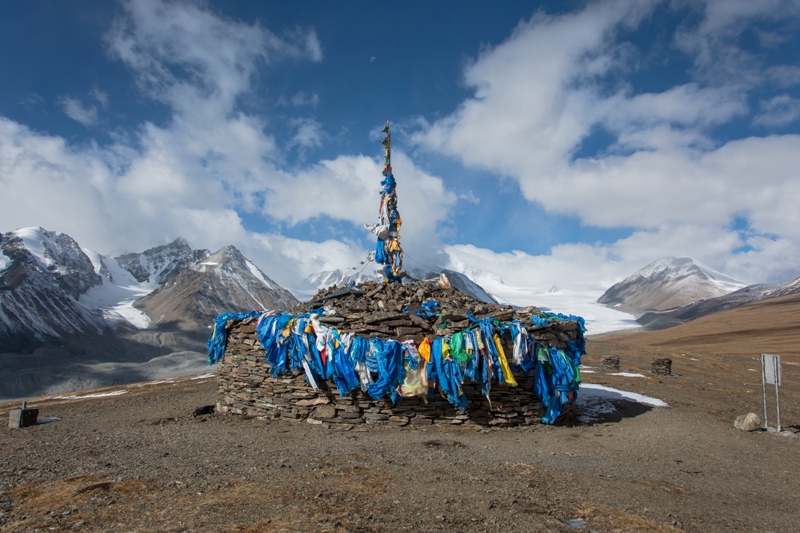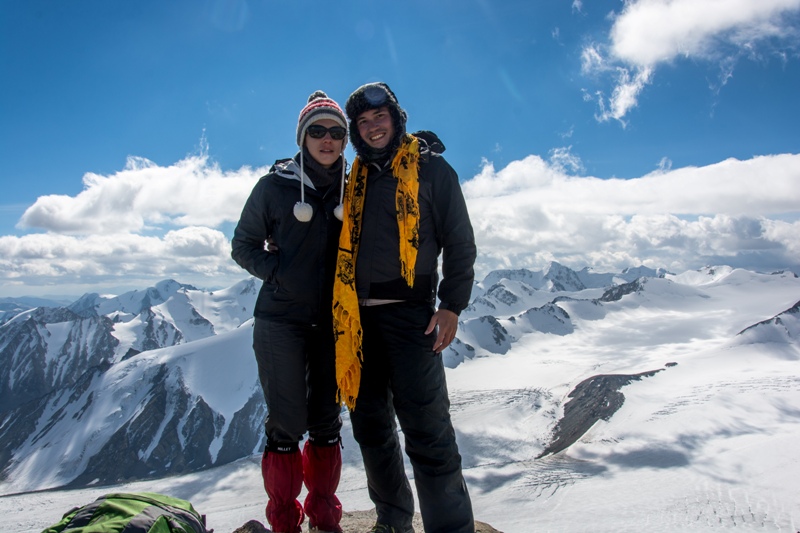Mongolia and the Altai Mountains
Our trip
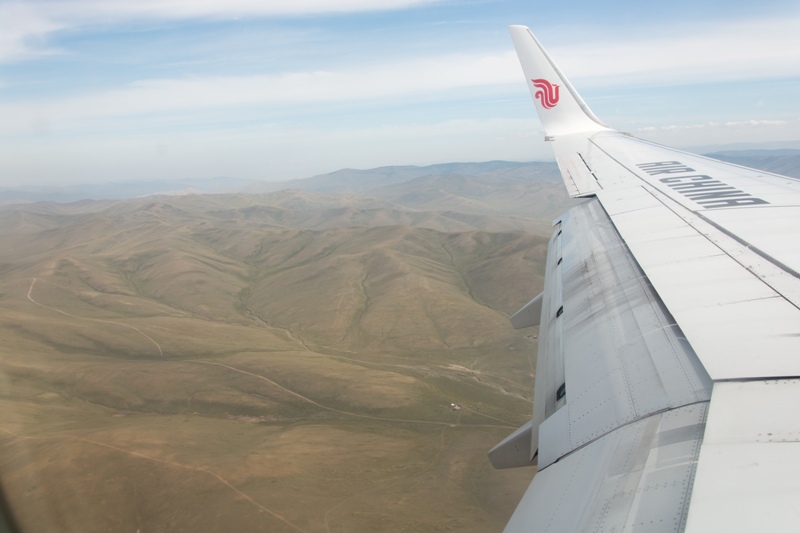 In September 2016, we travelled to this remote region of Mongolia to learn about the unique traditions of the Kazakhs. It is mandatory for tourists to have an invitation letter from a recognized travel agency in order to travel in Mongolia, and we decided to use the services of Blue Wolf, one of the main operators in Olgii Altai region. Canat proposed the itinerary, and our guide, Bakhitgul was fantastic, please contact her if you'd like to organize a trip there bakhitgul.altay@gmail.com ! We absolutely recommend her; she is a Kazakh English teacher who is always keen on sharing about her culture and traditions. She is also a great hiker and can arrange amazing treks in the steppes, around the lakes and to the top of some of the most impressive peaks of the Altai region. Our trip would not have been the same without her! After arriving at Ulaan Bator, we took another flight to the far-western part of Mongolia where our trip was split in two phases: attending the Eagle Festival in Ulgii, before going further west into the Altai Mountains bordering with Kazakhstan, Russia and China.
In September 2016, we travelled to this remote region of Mongolia to learn about the unique traditions of the Kazakhs. It is mandatory for tourists to have an invitation letter from a recognized travel agency in order to travel in Mongolia, and we decided to use the services of Blue Wolf, one of the main operators in Olgii Altai region. Canat proposed the itinerary, and our guide, Bakhitgul was fantastic, please contact her if you'd like to organize a trip there bakhitgul.altay@gmail.com ! We absolutely recommend her; she is a Kazakh English teacher who is always keen on sharing about her culture and traditions. She is also a great hiker and can arrange amazing treks in the steppes, around the lakes and to the top of some of the most impressive peaks of the Altai region. Our trip would not have been the same without her! After arriving at Ulaan Bator, we took another flight to the far-western part of Mongolia where our trip was split in two phases: attending the Eagle Festival in Ulgii, before going further west into the Altai Mountains bordering with Kazakhstan, Russia and China.

The Eagle Hunting Festival
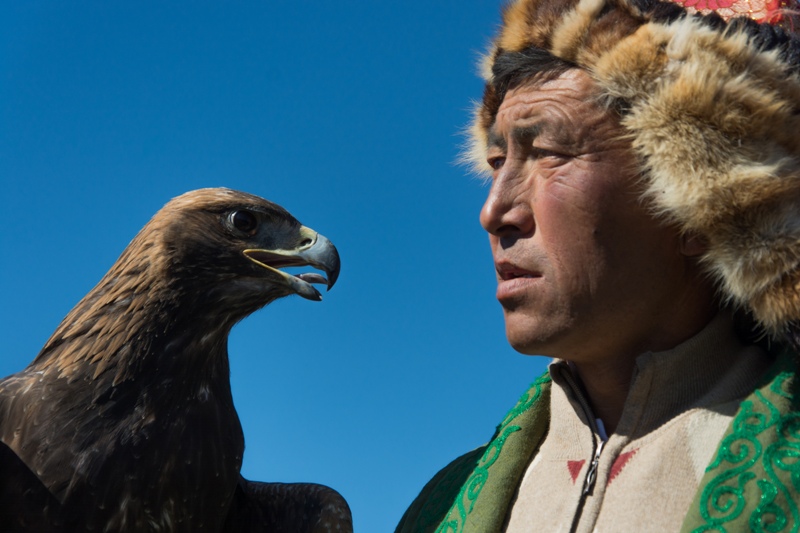 Every year, a spectacular and unique festival takes place in the plains of the Altai region, just a few weeks short of the arrival of Mongolia's tough winter. It is at this occasion that nomadic Kazakh families that had been scattered during the summer months come together again, and indulge in their favourite activity: competing in centuries-old traditional games. The most impressive of these is without doubts Eagle Hunting, a traditional technique where skilful riders combine riding skills (which is a second nature to many in this part of the world) with Falconry to hunt rabbits, marmots and foxes in the great steppes.
Every year, a spectacular and unique festival takes place in the plains of the Altai region, just a few weeks short of the arrival of Mongolia's tough winter. It is at this occasion that nomadic Kazakh families that had been scattered during the summer months come together again, and indulge in their favourite activity: competing in centuries-old traditional games. The most impressive of these is without doubts Eagle Hunting, a traditional technique where skilful riders combine riding skills (which is a second nature to many in this part of the world) with Falconry to hunt rabbits, marmots and foxes in the great steppes.
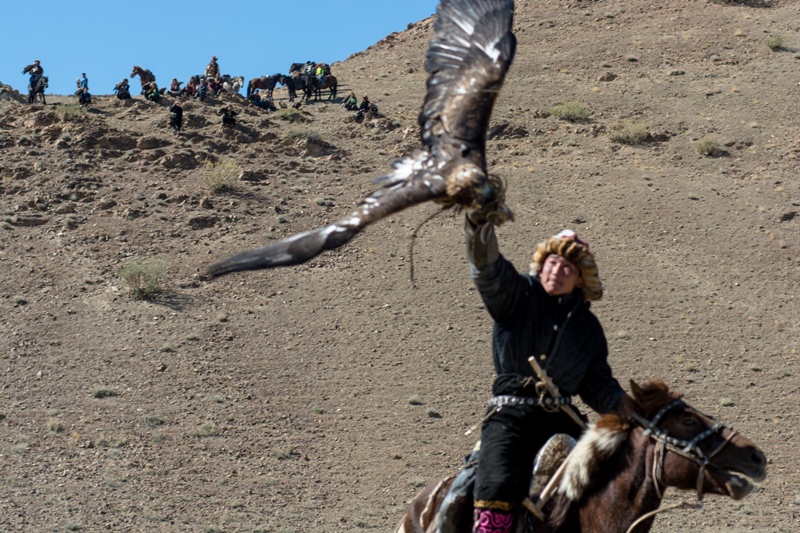 The location chosen for the festival differs from one year to the other, but will typically need to meet a few basic requirements such as having a small hill from which to launch the eagles, vast plains with a gentle stream to accommodate the Gers of participants and tourists that flock to be part of the experience. Although the eagles are trained since very young, the success rate is a testimony to the complexity of this art! One of the challenges tests the ability of the eagle to reach its master. The eagle is perched on top of the hill and as its master rides down towards the plain (at amazing speeds), it launches and dives down to land on its master's gloved arm. It is quite amazing to see the skills of the riders who must master the horse and position it accurately for the eagle to land properly on the extended arm.
The location chosen for the festival differs from one year to the other, but will typically need to meet a few basic requirements such as having a small hill from which to launch the eagles, vast plains with a gentle stream to accommodate the Gers of participants and tourists that flock to be part of the experience. Although the eagles are trained since very young, the success rate is a testimony to the complexity of this art! One of the challenges tests the ability of the eagle to reach its master. The eagle is perched on top of the hill and as its master rides down towards the plain (at amazing speeds), it launches and dives down to land on its master's gloved arm. It is quite amazing to see the skills of the riders who must master the horse and position it accurately for the eagle to land properly on the extended arm.
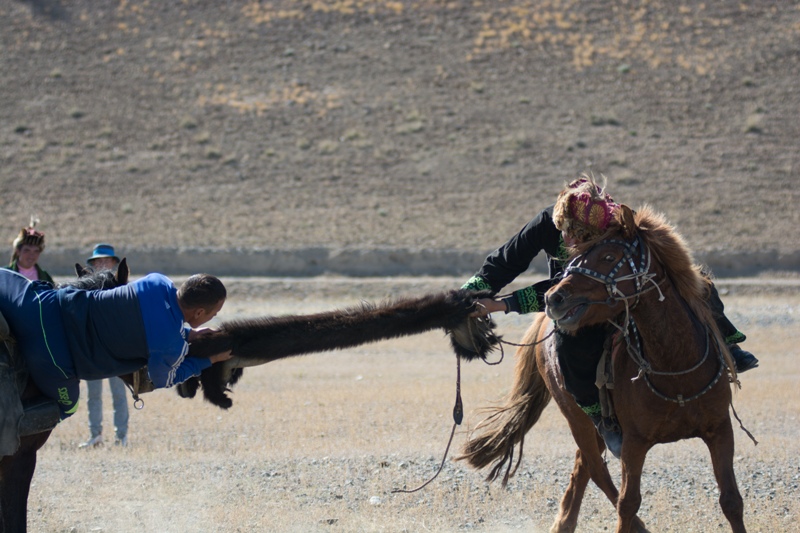 There are many different challenges, all of them derived from century old traditions. One challenge involves launching eagles onto dead rabbits pulled by strings, while others test rider's skills such as the "goat skin" game where two riders battle on horseback over a goatskin at incredible speed and positions on horseback. During this whole festival, the most striking contest is probably the one entered by all Kazakh and which involves putting on its very best attire! Traditional hats, fur coats, leather bags and colourful clothes makes this festival in the middle of the steppes truly spectacular! In the late afternoon, the participants withdraw one by one in a huge cloud of dust. Some leave alone on horseback with their eagle proudly perched on their arm, others leave with the entire family aboard some of the dozen of Russian-made vans. When the dust sets, the plain claims back its peacefulness with only a few Gers by the water to attest of the incredible gathering that just occurred!
There are many different challenges, all of them derived from century old traditions. One challenge involves launching eagles onto dead rabbits pulled by strings, while others test rider's skills such as the "goat skin" game where two riders battle on horseback over a goatskin at incredible speed and positions on horseback. During this whole festival, the most striking contest is probably the one entered by all Kazakh and which involves putting on its very best attire! Traditional hats, fur coats, leather bags and colourful clothes makes this festival in the middle of the steppes truly spectacular! In the late afternoon, the participants withdraw one by one in a huge cloud of dust. Some leave alone on horseback with their eagle proudly perched on their arm, others leave with the entire family aboard some of the dozen of Russian-made vans. When the dust sets, the plain claims back its peacefulness with only a few Gers by the water to attest of the incredible gathering that just occurred!
Kazakh Way of Life
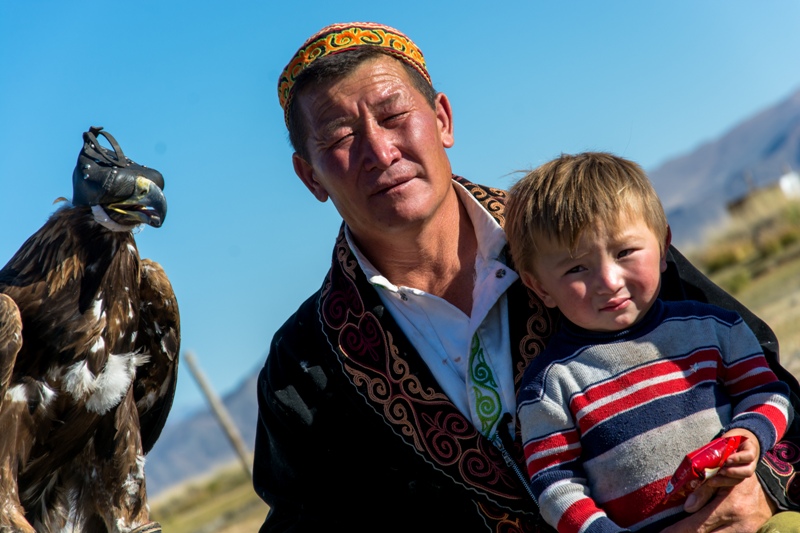 After the festival, we got to spend a bit of time with a really nice family that welcomed us in their Ger. This was a fantastic opportunity to share some simple moments and get to understand the Kazakh way of life. The Ger (or Yurt) is the traditional accommodation of Kazakh Nomads, and its location in the steppes, near a gentle stream where cattle congregate was so peaceful! Gers have been part of the central Asia culture for centuries. It is constructed to be assembled and disassembled often, and it's biggest part is the door made of massive wood and the stove which takes a central role in daily life. The Ger can be mounted within half a day, and is typically transported on camelback. The heavy felts that cover the Ger provide surprisingly good isolation, a very important feature when winters can reach -50C! Although it is not luxurious, the Ger is well organized and each part has a particular usage and signification. The bright decorations and sophisticated furs are a testimony of the great care that Kazakh families put in these homes, which are the center of their lives throughout the summer months (Most Kazakh spend the difficult winter months with families established in towns). The family that hosted us was really nice and shared with us so much on their daily lives, and of course a little bit on their Eagle training drills! Although they may have looked very serious in a first 'official' picture, the second one definitely reflected their spirit: open and generous! We will never forget the grand sight the father & son offered when departing in the early morning sun, the majestic silhouette of their Eagles slowly vanishing in the dust lifted by the hoofs of their eager horses.
After the festival, we got to spend a bit of time with a really nice family that welcomed us in their Ger. This was a fantastic opportunity to share some simple moments and get to understand the Kazakh way of life. The Ger (or Yurt) is the traditional accommodation of Kazakh Nomads, and its location in the steppes, near a gentle stream where cattle congregate was so peaceful! Gers have been part of the central Asia culture for centuries. It is constructed to be assembled and disassembled often, and it's biggest part is the door made of massive wood and the stove which takes a central role in daily life. The Ger can be mounted within half a day, and is typically transported on camelback. The heavy felts that cover the Ger provide surprisingly good isolation, a very important feature when winters can reach -50C! Although it is not luxurious, the Ger is well organized and each part has a particular usage and signification. The bright decorations and sophisticated furs are a testimony of the great care that Kazakh families put in these homes, which are the center of their lives throughout the summer months (Most Kazakh spend the difficult winter months with families established in towns). The family that hosted us was really nice and shared with us so much on their daily lives, and of course a little bit on their Eagle training drills! Although they may have looked very serious in a first 'official' picture, the second one definitely reflected their spirit: open and generous! We will never forget the grand sight the father & son offered when departing in the early morning sun, the majestic silhouette of their Eagles slowly vanishing in the dust lifted by the hoofs of their eager horses.
Journey to the Altai Mountains
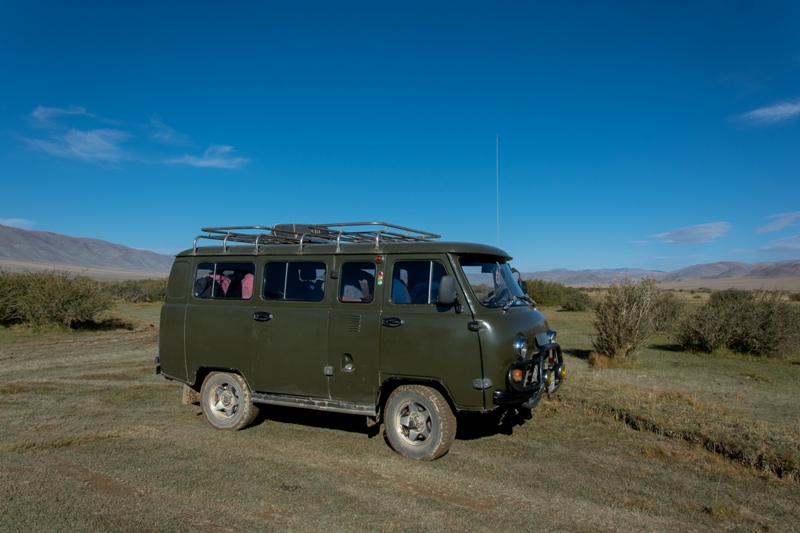 After the Eagle Festival, we left towards Tavan Bogd, a national park located in the Altai Mountains. Leaving the town of Ulgii was quite fast and we were very soon "riding" in the steppes on board a vibrating but sturdy Russian-made Van! There aren't well defined roads or highways and it feels like every driver is just following his internal compass and crossing through the steppes at great speed as they please, making new marks on the thin grass. Far on the horizon we could guess other vans thundering through the landscape thanks to the thick clouds of dust left in their wakes. As there are no formal road markings, each driver is free to take the way he deems the most forgiving to its vehicle's suffering suspensions and smoking engine! The many marks left on the steppes look like many railway tracks, sometimes coming together, sometimes making big detours from previously flooded areas which are given away by large scars on the dried-up soil. The rare encounter are either scary experience as both drivers gauge their best routes before reluctantly giving way, or simply an opportunity for a pit stop to share news or tips on the road ahead. There is a great respect to the local populations and we did stop a few times to give water and few biscuits to lonesome riders in the middle of nowhere.
After the Eagle Festival, we left towards Tavan Bogd, a national park located in the Altai Mountains. Leaving the town of Ulgii was quite fast and we were very soon "riding" in the steppes on board a vibrating but sturdy Russian-made Van! There aren't well defined roads or highways and it feels like every driver is just following his internal compass and crossing through the steppes at great speed as they please, making new marks on the thin grass. Far on the horizon we could guess other vans thundering through the landscape thanks to the thick clouds of dust left in their wakes. As there are no formal road markings, each driver is free to take the way he deems the most forgiving to its vehicle's suffering suspensions and smoking engine! The many marks left on the steppes look like many railway tracks, sometimes coming together, sometimes making big detours from previously flooded areas which are given away by large scars on the dried-up soil. The rare encounter are either scary experience as both drivers gauge their best routes before reluctantly giving way, or simply an opportunity for a pit stop to share news or tips on the road ahead. There is a great respect to the local populations and we did stop a few times to give water and few biscuits to lonesome riders in the middle of nowhere.
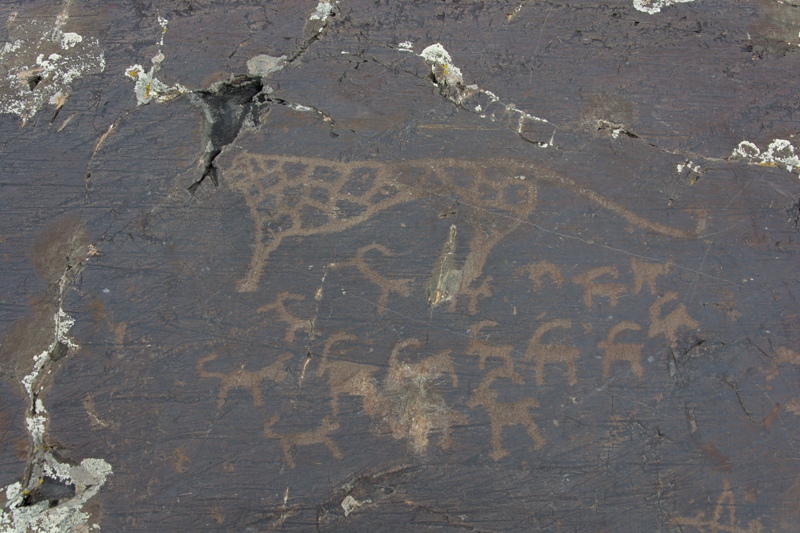 We first stopped in the beautiful Tsagaan Gol valley where Petroglyphs (Rock art) dating from the Bronze Ages overlook dramatic scenery. We were even lucky enough to see wild Ibex hopping from one rock to the other on top of us, at blistering pace! Finally we reached our camping location, starting point for the trek to the Potanin glacier and Malchin Peak! As we arrived late, the locals did not anticipate the need for the Ger and had started to layout nicely the many parts of a freshly slaughtered lamb! A few minutes later the lamb was packed in a box, the head literally swoop under the carpet and we could get a rest before the long trek while our wonderful guide secured Camels to help us carry tents, food and equipment to the foot of Malchin Peak.
We first stopped in the beautiful Tsagaan Gol valley where Petroglyphs (Rock art) dating from the Bronze Ages overlook dramatic scenery. We were even lucky enough to see wild Ibex hopping from one rock to the other on top of us, at blistering pace! Finally we reached our camping location, starting point for the trek to the Potanin glacier and Malchin Peak! As we arrived late, the locals did not anticipate the need for the Ger and had started to layout nicely the many parts of a freshly slaughtered lamb! A few minutes later the lamb was packed in a box, the head literally swoop under the carpet and we could get a rest before the long trek while our wonderful guide secured Camels to help us carry tents, food and equipment to the foot of Malchin Peak.
Tavan Bogd and Malchin Peak
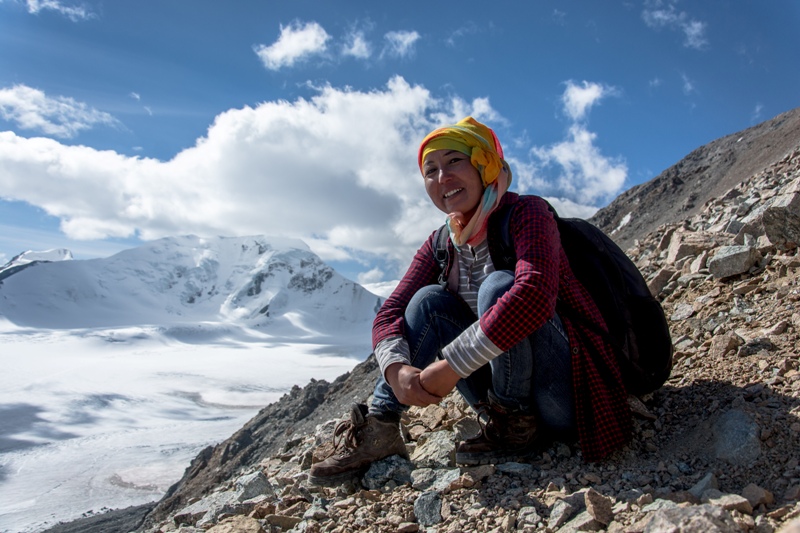 Early the next day, we started the 16km hike to the base camp for Malchin Peak. Led by our guide Bakhitgul who seemed to be able to do the trek with eyes closed; this trek was simply amazing. In the span of a day, we felt like walking through the four seasons, with rain followed by snow, somehow swept away by low clouds revealing a blazing sun minutes later! On top of ridges we could feel the stinging cold wind on our skins while gazing at the colourful autumn valley below, and minutes later we would be stuck in 30cm deep bog with spiky grass soaked in frozen water biting our feet. After a few hours we climbed a last slope that would eventually reveal a truly stunning sight: Potanin Glacier, Mongolia's longest Glacier surrounded by the five majestic (and holy) peaks of Tavan Bogd. This is where we eventually set the tents to rest in preparation for the 6 hours climb the next morning.
Early the next day, we started the 16km hike to the base camp for Malchin Peak. Led by our guide Bakhitgul who seemed to be able to do the trek with eyes closed; this trek was simply amazing. In the span of a day, we felt like walking through the four seasons, with rain followed by snow, somehow swept away by low clouds revealing a blazing sun minutes later! On top of ridges we could feel the stinging cold wind on our skins while gazing at the colourful autumn valley below, and minutes later we would be stuck in 30cm deep bog with spiky grass soaked in frozen water biting our feet. After a few hours we climbed a last slope that would eventually reveal a truly stunning sight: Potanin Glacier, Mongolia's longest Glacier surrounded by the five majestic (and holy) peaks of Tavan Bogd. This is where we eventually set the tents to rest in preparation for the 6 hours climb the next morning.
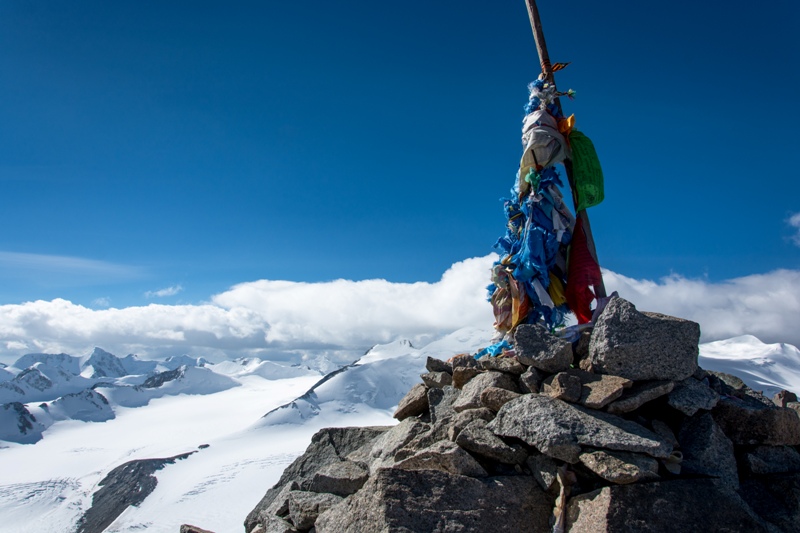 The next morning we were greeted by amazing weather and started the hike up to the summit of the beautiful Malchin Peak. The trek up is quite straight forward as the mountain is a massive conical pile of rock. If the fantastic view on the Glacier below does not take your breath away maybe the altitude and steep slopes will do it instead! When reaching the top and beyond the thick immaculate snowy slopes, we could start to see the seemingly infinite golden-coloured steppes of Russia to our right (North), and ahead of us (East), a long chain of mountains belonging to Kazakhstan. On our left (South), beyond the Glacier below us, it was the Altai mountain range stretching before our eyes all the way into China. Reaching the summit was tricky with loose rocks on the south slope and thick slippery snow on the northern slope. Although the Peak seemed massive from below, the summit was really small and we felt that any wrong footing would pay us a free expedited trip in either of the three bordering countries! Finally we were there, at this very intriguing intersection on the Silk road map where China, Russia, Mongolia and Kazakhstan meet!
The next morning we were greeted by amazing weather and started the hike up to the summit of the beautiful Malchin Peak. The trek up is quite straight forward as the mountain is a massive conical pile of rock. If the fantastic view on the Glacier below does not take your breath away maybe the altitude and steep slopes will do it instead! When reaching the top and beyond the thick immaculate snowy slopes, we could start to see the seemingly infinite golden-coloured steppes of Russia to our right (North), and ahead of us (East), a long chain of mountains belonging to Kazakhstan. On our left (South), beyond the Glacier below us, it was the Altai mountain range stretching before our eyes all the way into China. Reaching the summit was tricky with loose rocks on the south slope and thick slippery snow on the northern slope. Although the Peak seemed massive from below, the summit was really small and we felt that any wrong footing would pay us a free expedited trip in either of the three bordering countries! Finally we were there, at this very intriguing intersection on the Silk road map where China, Russia, Mongolia and Kazakhstan meet!
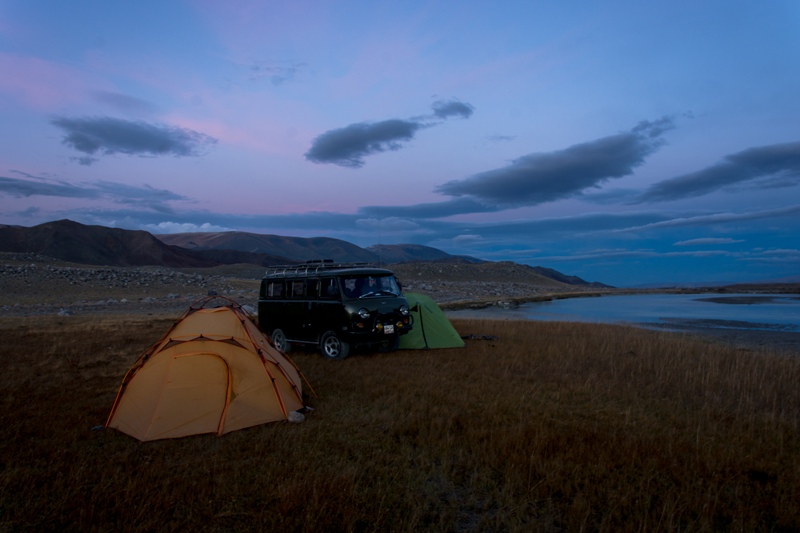 The way down felt just like skiing on pebbles and was done in a tenth of the duration required for the way up! We quickly reached back the tents and started our way back to the camp where the van was waiting. The 16km way back was completely different to the way in. Different weather, different scenery, different conditions. Rarely have we felt so free trekking, the snow had covered a large portion of the steppes and we literally made our way back, crossing through the steppes, the valleys, the hills and the permafrost layers. This has got to be one of our favourite treks! We reached the entrance of the Tavan Bogd park and knew that after having reached this so remote location, we would now make our long way back home…
The way down felt just like skiing on pebbles and was done in a tenth of the duration required for the way up! We quickly reached back the tents and started our way back to the camp where the van was waiting. The 16km way back was completely different to the way in. Different weather, different scenery, different conditions. Rarely have we felt so free trekking, the snow had covered a large portion of the steppes and we literally made our way back, crossing through the steppes, the valleys, the hills and the permafrost layers. This has got to be one of our favourite treks! We reached the entrance of the Tavan Bogd park and knew that after having reached this so remote location, we would now make our long way back home…
